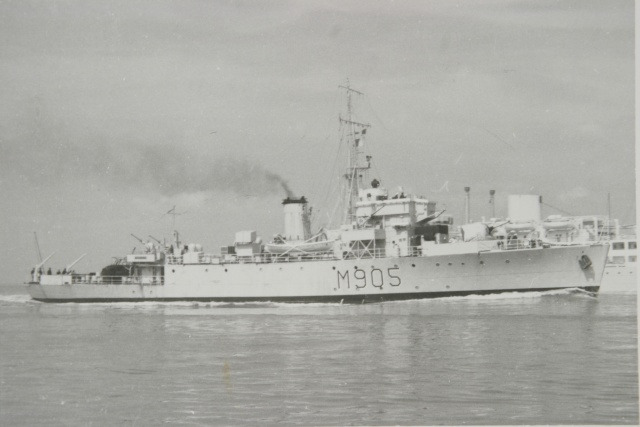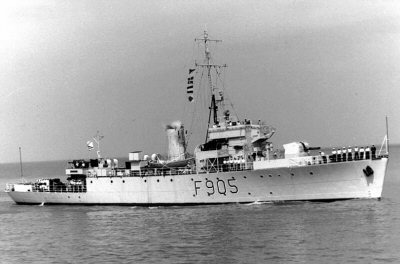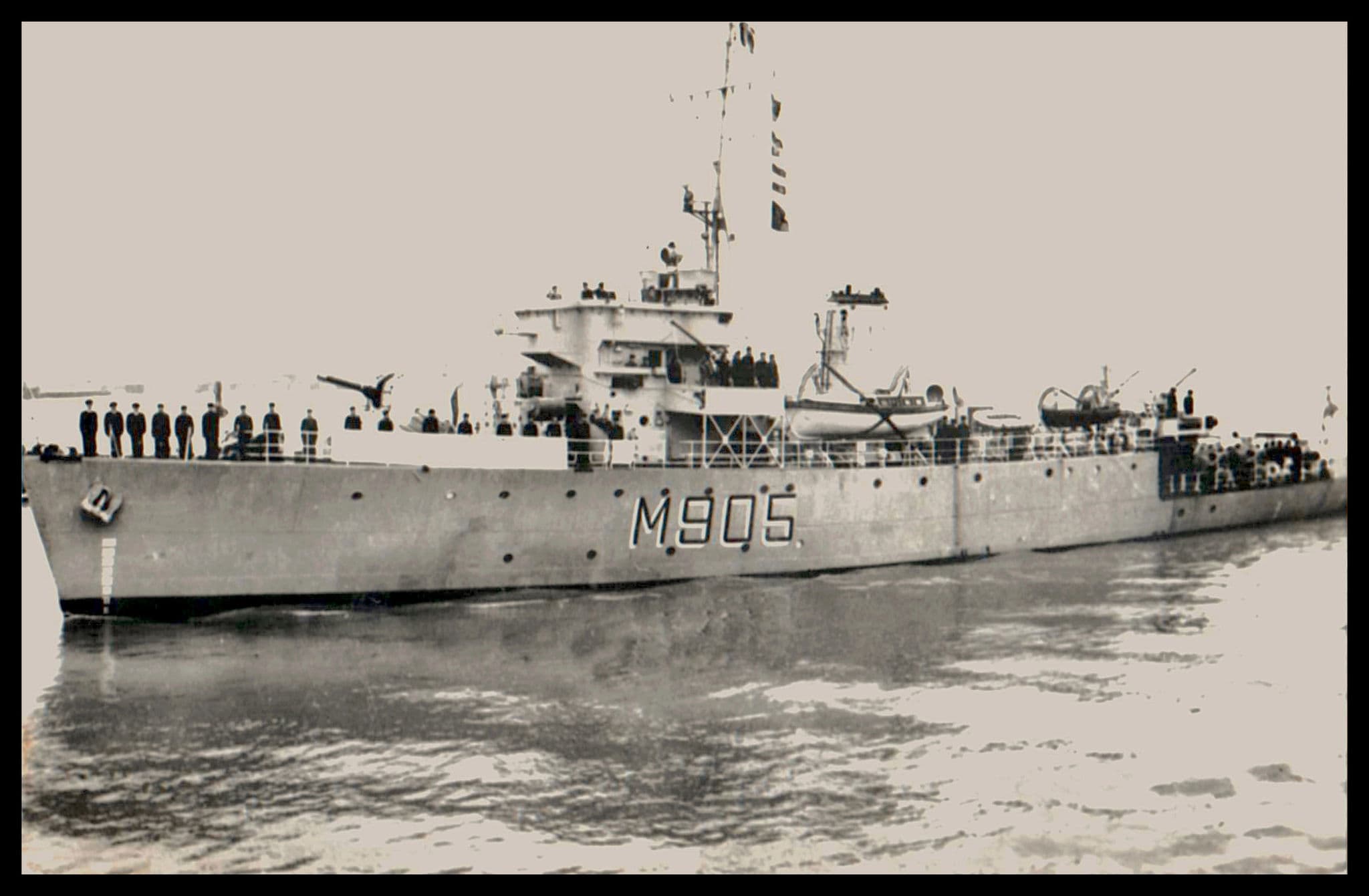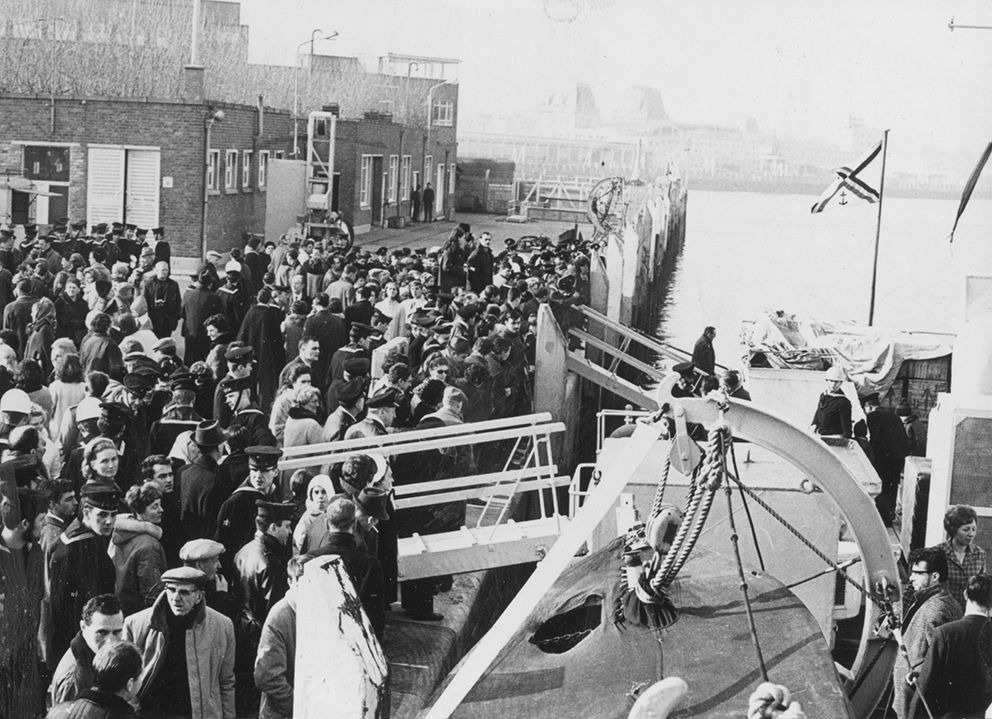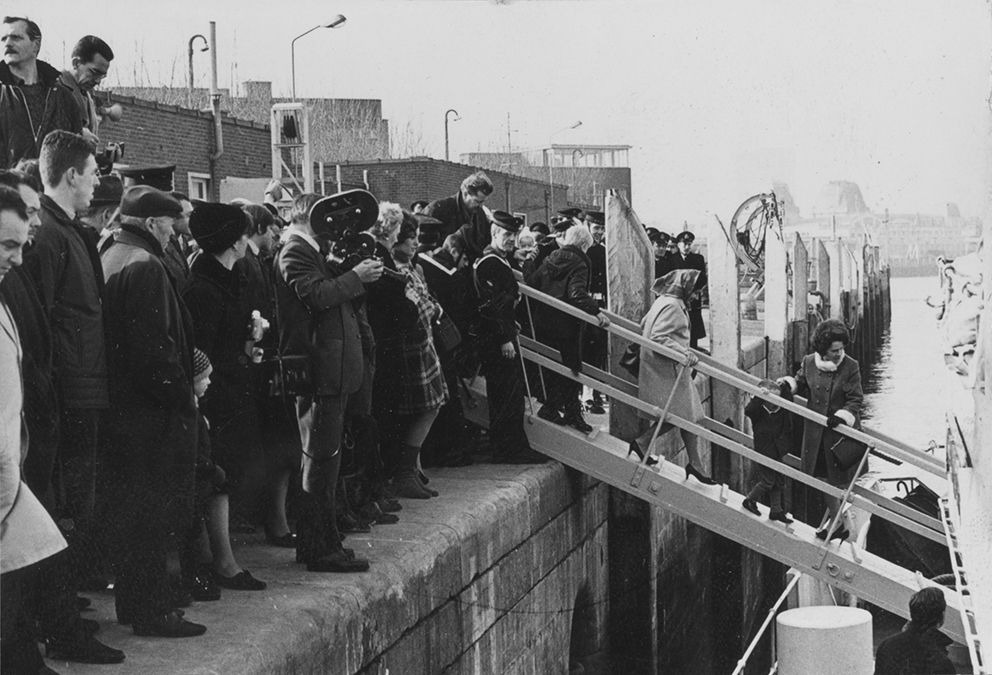- Yes
- No
- (independent) BeNeLux tree
- France: BeNeLux subtree
- other
- no/negative
BNS De Moor was the sixth and last Belgian BNC Algerine-class Minesweeper and an escort vessel with a highly unusual career. Originally laid down as a wartime minesweeper for the Royal Navy in 1942, she later served the Belgian Navy not only in patrol and escort duties, but also as a floating base for some of Belgium’s most ambitious oceanographic expeditions. Her most famous mission took her across half the globe to the Great Barrier Reef, where she supported marine biology research, documentary filming, and hundreds of diving operations.
TL;DR: Armed with an assortement of 40mm and 4-inch 50-caliber (102 mm) guns and various ASW equipment.
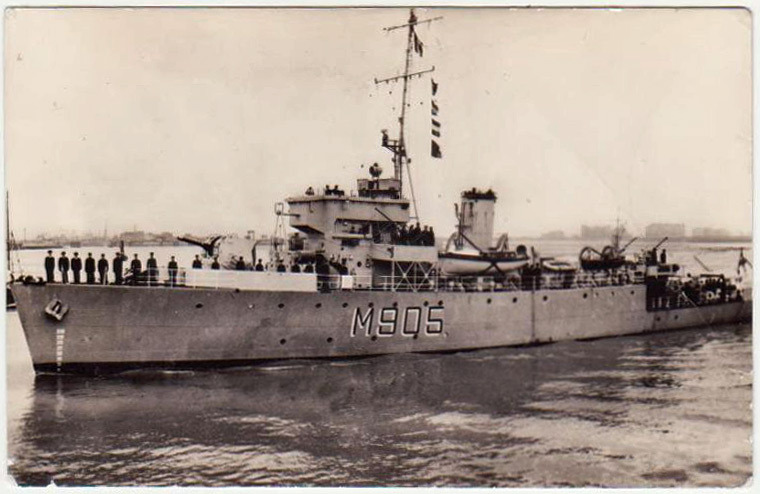
History & Service Timeline
Spoiler
BNS De Moor was a Belgian escort vessel specialized for oceanographic and scientific research missions. During 1967–1968, the ship conducted extensive scientific expeditions—most notably around the Great Barrier Reef—serving both as a floating research base and logistical platform for underwater exploration missions.
Key missions included:
- Filming ten scientific color documentaries (~20 minutes each) on aspects of Great Barrier Reef marine life, under mandate from the Belgian Ministry of Education and Culture.
- Executing three 15-day oceanographic cruises in the Congo River estuary region, equipped with deep-sounding and measurement instruments.
- Conducting the 1967–1968 Great Barrier Reef expedition: over 112 days, 800+ autonomous dives, about 400 small-boat excursions—all under harsh sea conditions. The expedition was directed by Prof. Distèche (expedition lead), and organized under rector Dubuisson from the University of Liège. The ship carried 5 officers, 24 NCOs, and 48 sailors.
History & Service Timeline
Date Event / Service Description 22 Sept 1942 Laid down at Harland and Wolff, Belfast, Northern Ireland. 3 Apr 1943 Launched. 26 Jun 1943 – Sept 1949 Commissioned as J219 ROSARIO in the Royal Navy. Sept 1949 – 12 Jan 1953 Re-designated M219 ROSARIO in the Royal Navy as a minesweeper. 13 Jan 1953 – 1959 Transferred to Belgian Navy and renamed M905 DE MOOR. 1959 – 1970 Reclassified as frigate F905 DE MOOR in Belgian Navy; undertook North Sea patrols, Icelandic fishery protection, and joint naval exercises during the 1960s. February 3–28, 1964 Patrolled southeastern North Sea; involved in herring and sprat fishing campaigns; missions included Icelandic patrols and port calls to Dublin and Reykjavik. June 23–24, 1964 Participated in exercise “COOP” near Ostend with the small-floaters division (MSI). 4 Apr 1967 Departed Ostend for long-range scientific voyage to the Great Barrier Reef, Australia. Apr 4, 1967 – Feb 20, 1968 Completed 323-day expedition involving filming, diving, sampling, and research at reef locations including Heron Island, Swain Reefs, Palm Islands, Cairns, and further north. Apr 1967 – Feb 1968 Spent 112 days on-site in the reef; conducted over 800 autonomous dives, 400+ small-boat excursions, and produced 10 documentary films. 20 Feb 1968 Returned to Ostend; received ceremonial welcome attended by then Prince Albert, city officials, and military and academic leaders. 11 Mar 1970 Sold to P.V.B.A M. Bakker, Bruges; end of naval service. 19 Mar 1970 Arrived at Bruges under new ownership.
As M905 De Moor in 1959
Specifications
General
Displacement: 990 tons standard, 1,237 tons (full load)
Length: 68.58 m
Beam: 10.82 m
Draught: 3.50 m
Propulsion: 2 × steam turbines, 3,000 shp
Boilers: 2 × Yarrow water-tube boilers
Screws: 2
Max speed: 16.5 kn (12 kn economical, 11 kn in minesweeping) — reportedly pushed to 25 kn in May 1953 during high-speed emergency manouvres
Range: 4,000 nmi at 10 kn
Call sign: ORJF
Crew: 7 officers, 30 petty officers/NCOs, 62 sailors (99 total without onboard doctor)
Armament Gun 1 x 1 102mm / 4-inch 50 cal. gun Secondaries 4 x 1 40 mm L/60 Bofors guns Depth Charges 2 x 8 depth charge rails (60 - 70 stowed): two rails Mortar 4 x 1 Hedgehog Spigot anti-submarine mortar Sonar Improved ASDIC system for submarine detection: 1 × Type 271 radar; 1 × Type 242 radar; 1 × Type 253 radar
Place in War thunder
In War Thunder, De Moor could be added to the BeNeLux naval lineup as a mid-BR escort vessel with radar and anti-submarine capabilities. Her armament and performance would make her more suited to a support role than to direct surface combat.
Spoiler
Category Estimate Battle Rating 3.X (Arcade/Realistic) Playstyle Mid-range escort/minesweeper with strong AA and decent anti-submarine tools; excels in defending convoys and smaller craft. Strengths Good AA armament, sonar/ASW capability, survivable hull, balanced speed. Weaknesses Light main gun for surface engagements against frigates or larger, slower than destroyers, limited high-explosive punch.
From the icy North Sea patrols to the warm turquoise waters of Australia’s Great Barrier Reef, BNS De Moor proved that warships could serve science as well as strategy. With her radar masts scanning the horizon and her decks cluttered with diving gear, she became a moving laboratory and a guardian for those who explored the deep.
Pictures
Sources
Spoiler
- JANE’S Naval Armament, London, UK
- Provisional Manual of Artillery, Technical Staff School, Gun Department, CENFOR-NAV ZM-FN Bruges, 1955
- “HMCS SWANSEA” The Life and Times of a Canadian Frigate by Commander R.C.N.V.R. Fraser McKee, Canada
- “The Guns 1939-1945” by Ian V. Hogg, London, UK
- The Algerine (I-III), 2000, P. Latinis.
- Chesneau, Roger, ed. (1980). Conway’s All the World’s Fighting Ships 1922–1946. Greenwich, UK: Conway Maritime Press. ISBN 0-85177-146-7.
- Marine Belge – “M905 et F905 De Moor” – Primary historical reference for ship’s service history and Great Barrier Reef expedition details.
- Harland and Wolff ship records (public archives at Brussels Royal Military Museum) – Technical construction data and original propulsion details.
- Dany Little. (2010, August 26). F905 De Moor [Video]. YouTube. https://www.youtube.com/watch?v=wFcscQaCi9c

